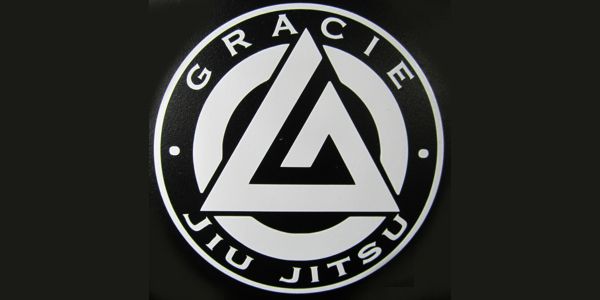Anyone who’s been involved in the martial arts for the past 10 years has heard of Gracie jujitsu (“GJJ”). A Brazilian modification of old-time Japanese jujitsu, the art (also known as Brazilian jiu jitsu, or “BJJ”) is mostly known for its emphasis on systematic groundfighting.
BJJ was largely unknown outside of Brazil (and, to a limited extent, Japan) until the introduction of the Ultimate Fighting Championship, a mixed martial arts competition in which combatants fought full contact and were allowed to use any technique whatsoever.
All of a sudden, everyone wanted to learn “Gracie jujitsu”. The reason? Time after time, Royce Gracie emerged victorious at the UFC. Karate men, ninjutsu masters, savate professeurs and boxers were all forced to tap out as Royce took them to the ground and systematically worked his way into a position where he could choke or joint-lock his opponents into submission. In almost every case, Royce was considerably smaller than his opponent. It was incredibly inspiring and envy-inducing.
The Gracies, entrepreneurs that they were, wasted no time trumpeting their art’s “street effectiveness.” The previous commonsense mentality was that going to the ground in a street fight was the worst thing you could do, but every time, the Gracies would point to Royce’s victories in the U.S. (and his brother Rickson’s far more impressive victories in Japan.) The Gracies would further claim that their’s was the most important and practical system to learn, because based on their experience fighting on the streets of Rio de Janeiro as well as in numerous challenge matches, “ninety percent of all fights go to the ground.”
Many other stylists had valid objections to the Gracie philosophy. But it’s hard to argue with such a dominating win record, which the Gracies surely had. So, for at least a couple years, most people bought into the Gracies’ arguments that groundfighting expertise, particularly of the BJJ variety, would be enough to carry the day almost all the time.
Then, the Gracie record started evening out. Gracie fighters started losing – at first, only to other Brazilian jujitsu opponents (mostly from Brazil), then to proponents of other grappling styles such as wrestlers and judo players, and then finally, to strikers as well. To be sure, the practitioners of Gracie jujitsu were still (and probably always will be) a force to be reckoned with when competing in a controlled environment, but their aura of invincibility was gone. This was key to opening the way to an honest examination of the effectiveness of BJJ in a real-life situation.
The Gracie rise and (slight) decline
Before we go any further, let me say that I have enormous respect for all the Gracies and believe their system is well worth studying, both for its practical usefulness and its enjoyability.
In a paradoxical way, the Gracies were able to dominate in the early days of mixed martial arts competition because traditional fighters so overestimated their opponents. I’ll explain.
Many great fighters will tell you that the toughest opponents aren’t necessarily those that are the most skilled and the most highly trained. Instead, it often is those that are untrained who pose the most problems. Untrained fighters move awkwardly due to their inexperience; this makes their attacks harder to predict. They will often do things that are entirely contrary to what a skilled fighter “knows” would never work. Yet, precisely because a good fighter “knows” that certain tactics are stupid – he becomes vulnerable to them. When such an attack is thrown at him, he freezes in disbelief, and he gets hit as a result.
The Vikings were versed in this philosophy. When the battle looked hopeless, they believed that the best thing to do was the stupidest tactic they could imagine – the one thing their opponents couldn’t believe they’d be stupid enough to try. And that would often save the day.
Now, I’m not saying that the Gracies are stupid, unskilled or untrained – far from it. But their strategy of taking the match to the ground was so contrary to long-established common sense that traditional martial artists found themselves unprepared to deal with the tactic. Even wrestlers, accustomed to groundfighting, were taken aback by the Gracies’ emphasis on submissions and willingness to stay on their backs; wrestlers know about submissions, but tend to stress the pin. Thus, the Gracies’ opponents defeated themselves by being surprised at unconventional tournament tactics and making mistakes as a result. In short, the Gracies won all the time in those days because their opponents were simply ignorant about what to do when the “stay on your feet” rule was broken.
Eventually, however, wrestlers and their standup counterparts began to succeed against BJJ practitioners in tournaments. It’s a fairly simple explanation: they studied the Gracie game and developed ways to counter it.
Addressing Gracie claims
“Ninety percent of all fights go to the ground” Ask anyone who constantly has to engage in hand-to-hand combat or lives with violence whether this statement is true. I guarantee that the answer will be “no.” Cops, soldiers, military operatives, and even bouncers rarely find themselves grappling on their backs in their line of work. This is not to say they don’t think it’s a useful thing to know, but it’s generally not the main way their fights take place.
In truth, this Gracie statement reflects more about their art than fights in general. A Gracie practitioner’s strength is groundfighting; it makes sense that he would try to take a fight to the ground, where his skills are most likely far greater than his opponents. It thus becomes a self-fulfilling statement; most of a Gracie practitioner’s fights go to the ground simply because he actively tries to take them there.
“Our success in the UFC and other MMA matches shows our art’s street effectiveness.” In fact, the Gracies’ proclivity for going to the ground makes it dangerous for use on the street, for many reasons.
- First, let’s compare the environment. MMA matches take place on nice, clean padded mats, surrounded by a ring or a chain-link fence designed to give under pressure. Also, the ring is clear of any obstacles besides a referee. A real fight, however, takes place on hard concrete or asphalt, where even a casual bump of an elbow, knee or skull can lead to a break. And if you ever try to go to the guard position in a real fight, your opponent needs only to stand up and slam you to the ground to crack your spine. (In a mat fight, fighters shrug off this move with nary a wince.) And that’s not even taking into account obstacles such as signs, fire hydrants, broken glass, etc. that can cause you serious injury while grappling.
- And let’s not forget about the possibility that your attacker is armed. I need not explain why wrestling someone with a knife is a bad idea. The Gracies are always quite indignant about this concern, insisting that of course they wouldn’t advocate groundfighting with a knife-wielding opponent. The problem with this assertion, and indeed, with the strategy of taking a real fight to the ground, is that a skilled knife fighter rarely even reveals that he even has a knife. Most likely, someone going up against such a fighter will only realize belatedly that he has been cut or stabbed; even afterwards, he might not ever see the knife used to wound him.
- Oh yeah. The a**hole you’re fighting probably has friends. Who are also a**holes. No UFC fighter has to worry that his opponent’s buddies will jump into the Octagon. But the a**hole’s friends probably have no such reservations about jumping up and down on your skull. The Gracies have always declared that, “While it’s true that groundfighting is ineffective against multiple opponents, it’s impossible to prevail against more than one attacker anyway, so you should run and concentrate on defeating single opponents.” No realistic martial artist would deny that it is extremely difficult to defeat multiple opponents simultaneously – certainly far more challening than how way martial-arts movies make it seem. But it can, and has, been done. It’s just that doing so depends on explosiveness, speed, and mobility, and groundfighting is at heart a slow, marathon chess match – not a sprint-like blazing shootout. When a groundfighter says it is impossible to prevail against more than one attacker, what he really means is … it’s impossible for him.
- Run! It’s the fuzz! When you get into a fight – it’s best not to take the chance that the police will take your point of view. In fact, they probably won’t, and instead haul both your butts off to jail. Now, of course I’m not suggesting you break the law or evade the police. But maybe you might want to finish things off quickly and leave quickly – before your opponent’s buddies hear about the fight and arrive to help him. It’s not going to happen if you grapple with him. Even the best grappler will take a minute or two to overwhelm someone fighting for his life. A good striker, however, can end things in seconds – just look at Mike Tyson’s championship bouts from the days when he was truly dominant in the boxing world.
I’m not saying learning BJJ or groundfighting is a waste of time. But I just don’t think it should form the core of your fighting strategy and training.











